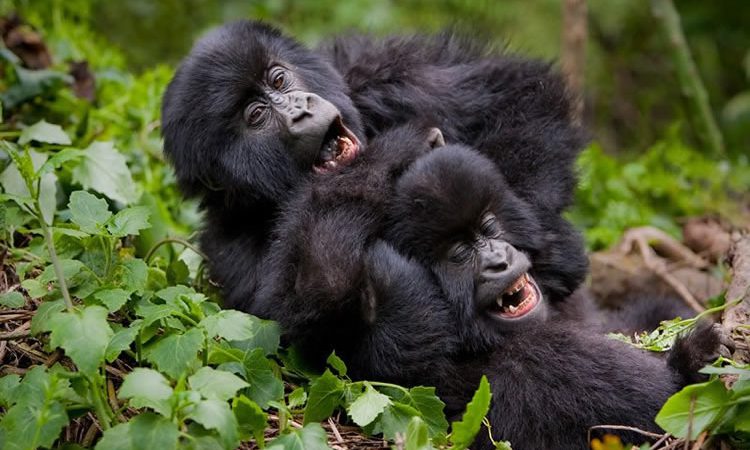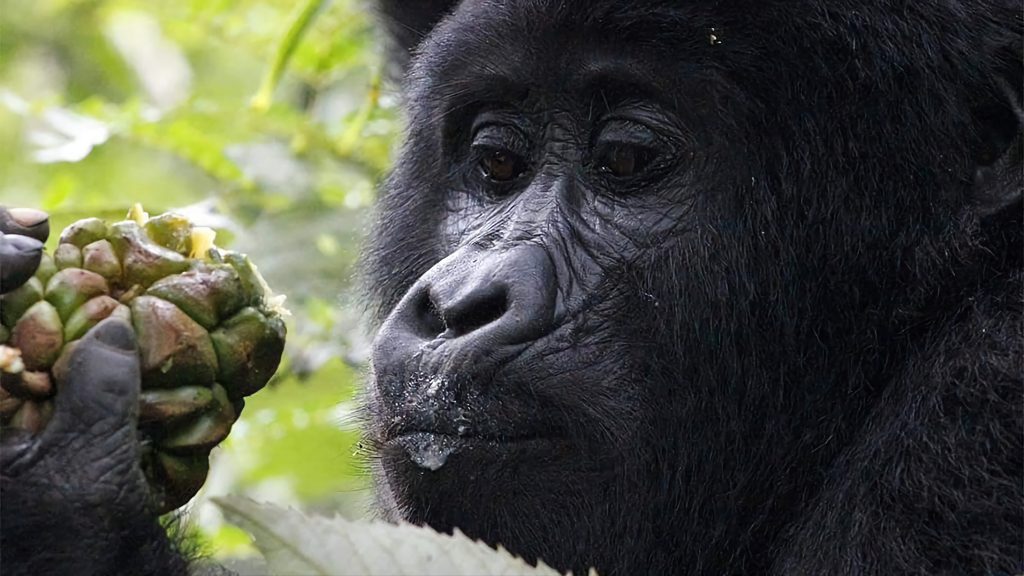Mountain Gorilla Predators
- Home
- Mountain Gorilla Predators
Mountain Gorilla Predators


Mountain gorillas are some of the creatures with least number of potential predators. Even then, majority of those are often unsuccessful. This is owed to the physic and mass of these creatures coupled with their great strength. When faced with some of these predators, their enemies barely stand a chance. A gorilla can tear apart or slit arguably most of those small predators. Another important aspect about mountain gorilla’s defense mechanisms is how they live in a considerable number together at a time. This makes it easier for them to counter a single enemy easily. However, it’s still vulnerable. Some of the commonly known predators to mountain gorillas are crocodiles and leopards. However, crocodiles are not so common predators as they rarely inhabit mountain ranges. Therefore, this leaves mainly the leopards as a major predator to these primates.
Leopards are generally at an advantage because of their subtle and flexible body build up. They are so amazing in their patience and movements. They can grow to averagely large sizes, moderate strength, but fast speeds. They are very intelligent creatures. One of their most outstanding advantages is their ability to climb trees with stability at great speeds. They can also jump to greater heights and lengths. When this is put together, individual mountain gorillas, especially the young ones, stand no chances pf surviving.
They are naturally predators which means their instincts aren’t merely adapted. These creatures are carnivores and therefore feed on meat. Ordinarily many people don’t believe it, but leopards can kill a mature mountain gorilla. This is common for the unsuspecting ones.
Even though the leopards have all these abilities, they barely attack mature mountain gorillas especially the silverbacks. The reason is a clear one, being that silverbacks which are the family leaders are often the strongest therein.
But among all mountain gorilla predators or potential enemies, none comes close to human beings. Humans like in past centuries, have been and still are the main dangers. Their activities usually have far-reaching consequences. Poaching for example, has been on for many years and this is partly the cause to which mountain gorillas are now grouped under the endangered wildlife species. Humans also encroach on the forest lands which are the major habitats of these mountain gorillas seeking timber, land for agriculture and settlement, among other vile reasons. Mining activities in the Virunga parts especially in D.R Congo also have for a long time been a major challenge to these gorillas. Needles to say, is the problem of constant insurgencies and wars that have caused massive destruction of forest lands. This is rampant in D.R Congo, and it’s so because these forests are hiding grounds for the rebels who shoot indiscriminately and end up killing these mountain gorillas. Consequentially, this prompts the mountain gorillas to migrate to new areas, some of which are unsafe for their inhabitation.
Due to these factors, various governments within the Virunga conservation area saw need to streamline conservation efforts. Many thanks to Dian Fossey (RIP) for creating awareness on both national and international communities on the dangers these gorillas faced. Her efforts also sparked works in research, and these have been taken on to extensive levels. The conservation is not only for the protection of these primates, but also preservation of the rainforests. For example, Uganda established both the National Forestry Authority and the Uganda Wildlife Authority to foresee the conservation efforts. Rwanda and D.R Congo also established their own national gorilla conservation bodies.
Internationally, there are similar bodies like International Gorilla Conservation Programme whose research has been effective in ensuring safety of the gorillas. Their breeding areas have been gazetted too, in order to prevent any more similar external activities that would interrupt the peaceful breeding of mountain gorillas.
